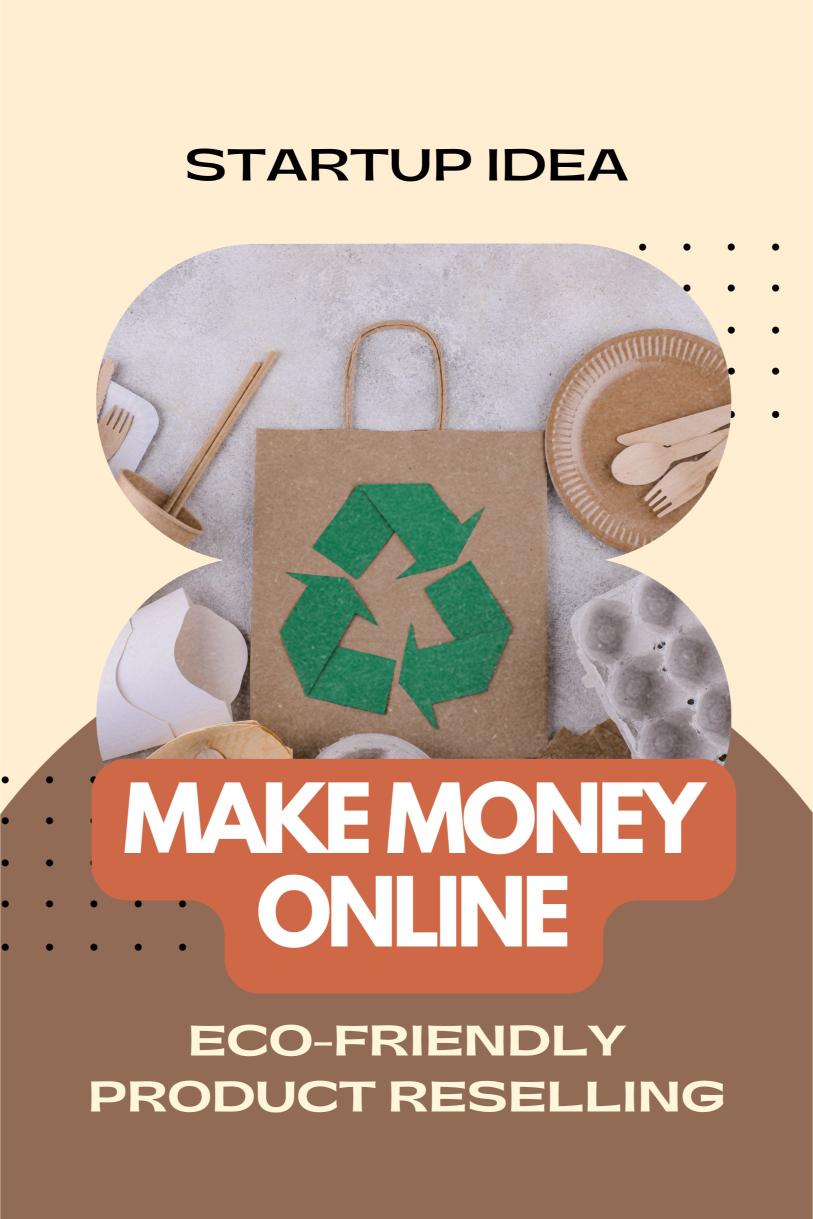Last Updated on October 21, 2024 by Arif Chowdhury
Ever feel like you’re constantly chasing that next paycheck?
Tired of the 9-to-5 grind eating up your best years?
What if I told you there’s a way to make money while you sleep, all while helping the planet?
Sounds too good to be true, right?
Well, buckle up, because we’re about to dive into the world of eco-friendly product reselling.
It’s not just a trend – it’s a revolution.
And the best part? You can do it all from your couch.
Why Eco-Friendly Reselling is Blowing Up
Let’s face it: the planet’s in trouble.
People are waking up to the mess we’ve made.
They want to do better, buy better, live better.
That’s where you come in.
By reselling eco-friendly products, you’re not just making bank.
You’re part of the solution.
And here’s the kicker: the global market for eco-friendly products is projected to reach $74.64 billion by 2028.
That’s a whole lot of green to go around.
Getting Started: The Basics
First things first: you need inventory.
But we’re not talking about filling your garage with junk.
We’re talking smart, sustainable choices.
Here’s what to look for:
- Gently used items that still have life in them
- Products made from recycled materials
- Organic, natural, or biodegradable goods
- Energy-efficient gadgets and appliances
The key? Quality over quantity.
People will pay more for stuff that lasts and doesn’t trash the planet.
Where to Find Your Eco-Goldmine
Think you need to scour the ends of the earth for inventory?
Think again.
Your eco-friendly treasure trove is closer than you think:
- Thrift stores and yard sales (hidden gems galore)
- Online marketplaces (eBay, Facebook Marketplace, Craigslist)
- Local eco-friendly businesses (partner up for wholesale deals)
- Your own home (start with what you’ve got)
Pro tip: Hit up estate sales.
You’d be amazed at the high-quality, vintage items people are letting go of.
One person’s trash is your sustainable cash cow.
Setting Up Shop: Where to Sell
Now that you’ve got the goods, it’s time to move ’em.
Your options are plenty:
- Etsy (perfect for handmade or vintage items)
- Amazon (the big leagues, but watch those fees)
- Your own website (total control, but more work)
- Instagram and Facebook (social selling is hot)
Don’t spread yourself too thin.
Pick one or two platforms and crush it.
Pricing for Profit (Without Being a Jerk)
Here’s where it gets tricky.
You want to make money, but you’re not here to rip people off.
The sweet spot? Fair prices that reflect the item’s eco-value.
Consider:
- Original cost
- Condition
- Rarity
- Eco-friendliness factor
People will pay more for sustainable goods.
In fact, 73% of global consumers say they would definitely or probably change their consumption habits to reduce their environmental impact.
That’s your market right there.
Marketing Your Green Machine
You’ve got the goods. You’ve priced ’em right.
Now, how do you get eyeballs on your stuff?
It’s all about the story:
- Highlight the eco-benefits of each item
- Show before and after pics (if you’ve upcycled)
- Share the impact (e.g., “This purchase saves X trees”)
- Use hashtags like #SustainableLiving and #EcoFriendly
Remember: you’re not just selling products.
You’re selling a lifestyle.
A cleaner, greener future.
That’s what people are buying into.
Scaling Up: From Side Hustle to Full-Time Gig
Started small and now you’re drowning in eco-orders?
Time to level up:
- Automate where you can (shipping labels, inventory tracking)
- Consider hiring help (virtual assistants are lifesavers)
- Expand your product line (but stay true to your eco-roots)
- Build relationships with suppliers (consistency is key)
The goal? Work smarter, not harder.
That’s how you turn this into real passive income.
Staying Legit: The Legal Side of Things
Nobody likes talking about this stuff, but it’s crucial:
- Register your business (LLC is often the way to go)
- Keep meticulous records (your accountant will thank you)
- Understand tax implications (especially if you’re crossing state lines)
- Follow consumer protection laws (no false advertising, folks)
It might seem like a hassle now, but trust me.
Doing it right from the start saves major headaches down the road.
The Secret Sauce: Building a Community
Want to know what separates the six-figure resellers from the rest?
Community.
Build a tribe of eco-conscious buyers who trust you:
- Start a blog or YouTube channel sharing eco-tips
- Host virtual “green living” workshops
- Collaborate with other eco-influencers
- Engage with your followers (respond to comments, ask for feedback)
Your community becomes your marketing team.
They’ll spread the word faster than any ad ever could.
Overcoming Roadblocks: It’s Not All Sunshine and Recycled Rainbows
Let’s get real for a second.
This isn’t a get-rich-quick scheme.
You’ll face challenges:
- Sourcing quality products consistently
- Dealing with shipping delays and damages
- Keeping up with trends and demand
- Balancing profit with eco-integrity
The key? Persistence and adaptability.
Every problem is an opportunity to innovate.
The Future is Green (and Profitable)
Here’s the deal: the eco-friendly market isn’t slowing down.
If anything, it’s accelerating.
By 2025, the sustainability market could be worth up to $150 billion in the US alone.
That’s not just growth. That’s explosion.
And you’re getting in on the ground floor.
Wrapping It Up: Your Green Light to Go
So there you have it.
A roadmap to turning your passion for the planet into cold, hard cash.
All from the comfort of your own home.
It’s not just about making money.
It’s about making a difference.
One eco-friendly product at a time.
Ready to dive in?
The planet (and your wallet) will thank you.
